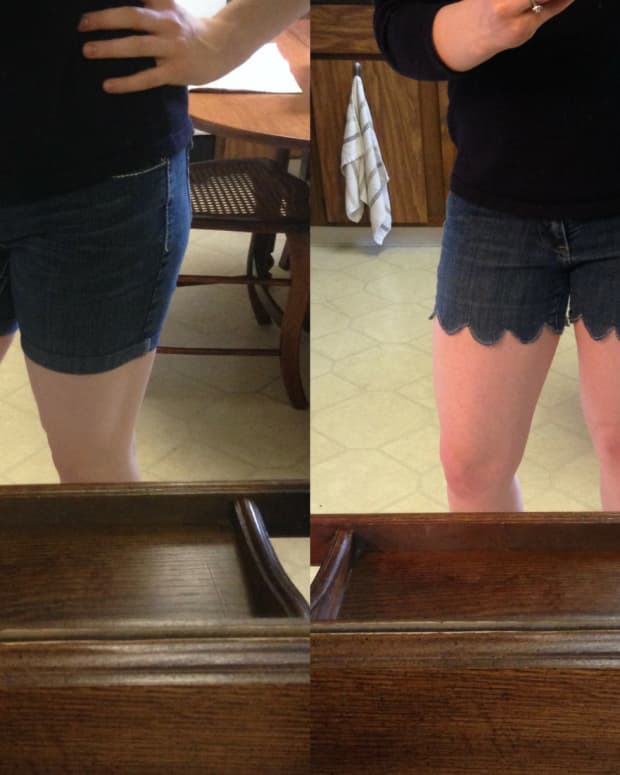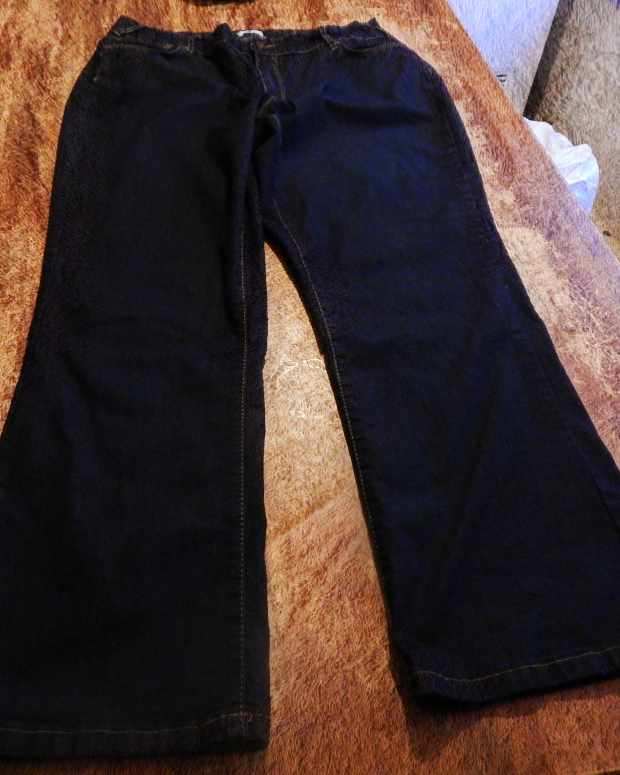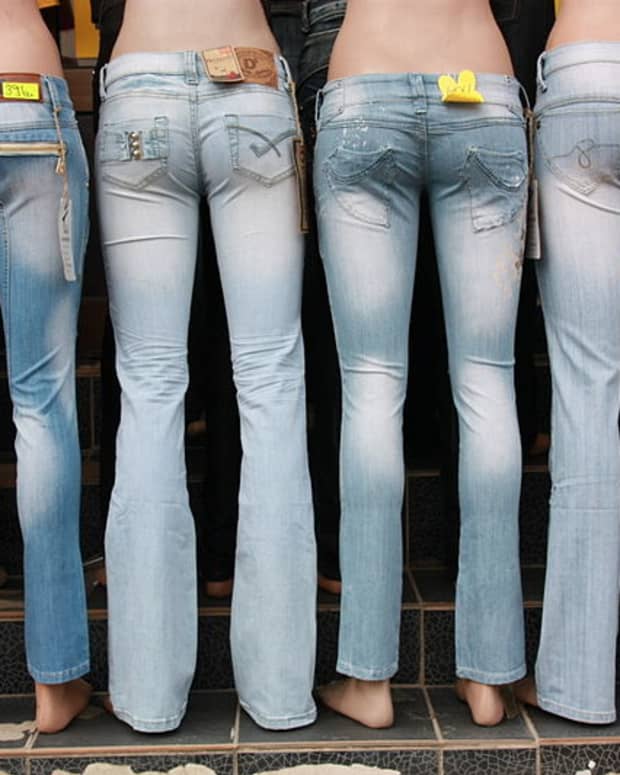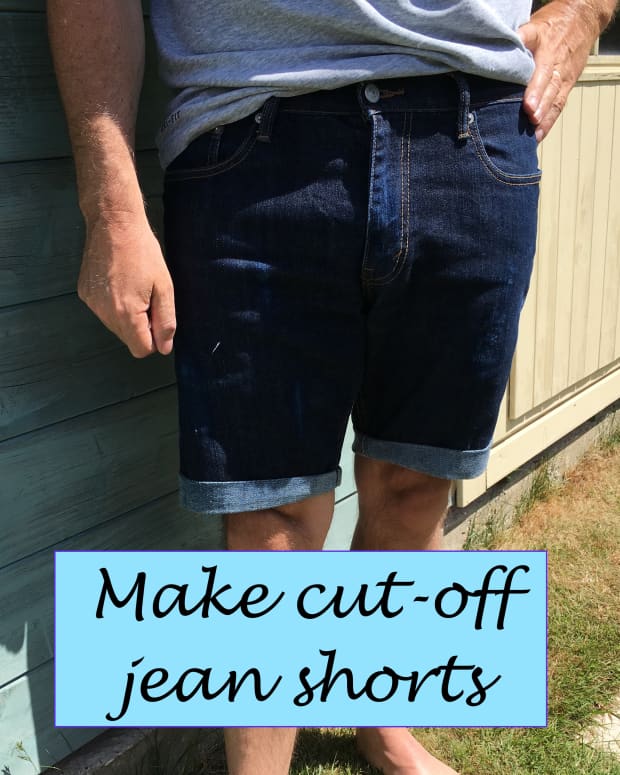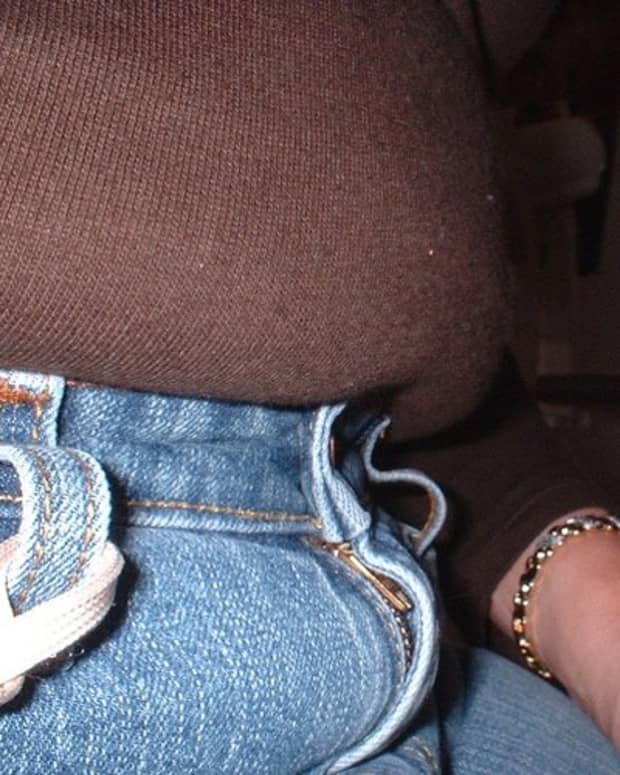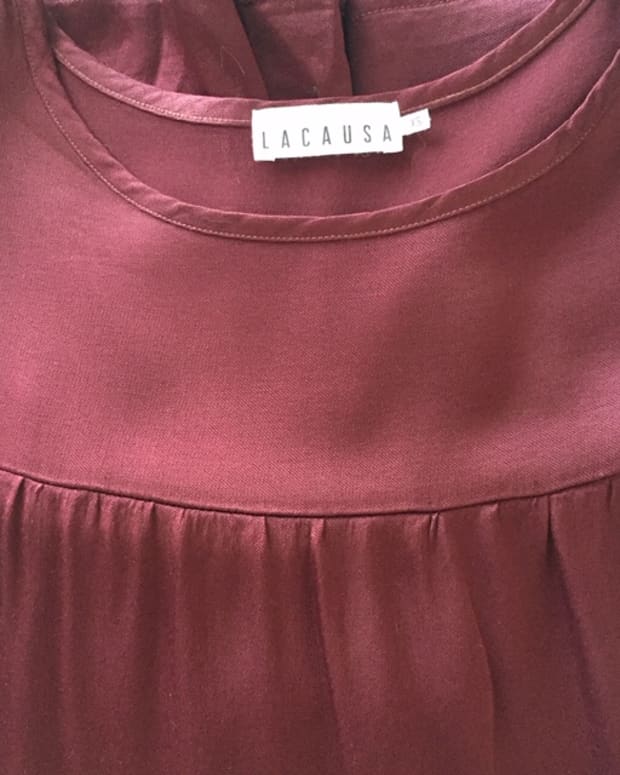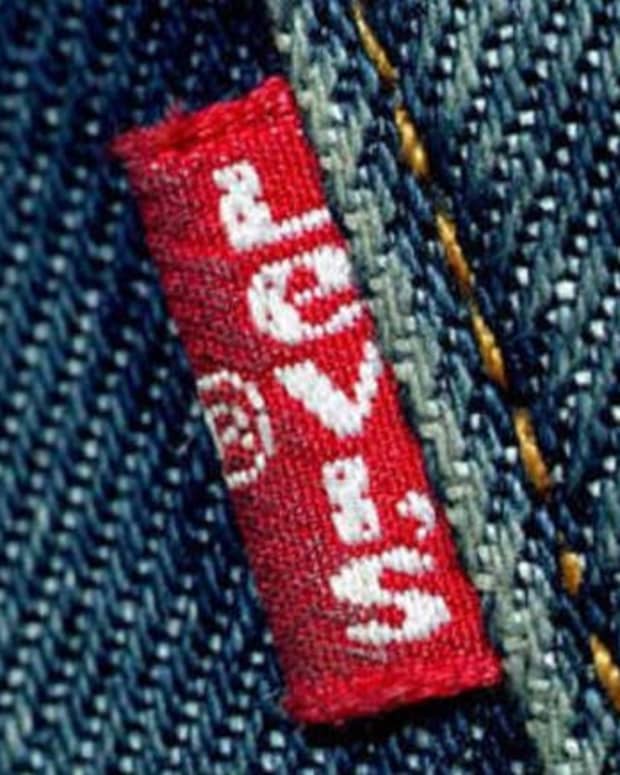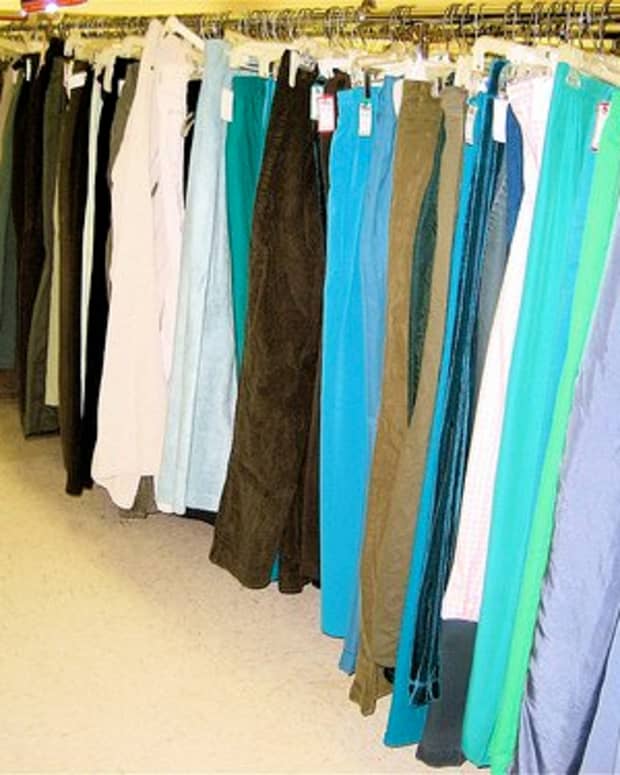How to Authenticate Brand Label Jeans
I'm well-versed in the manufacturing of designer brand jeans. Here I share my tips with other denim-enthusiasts.
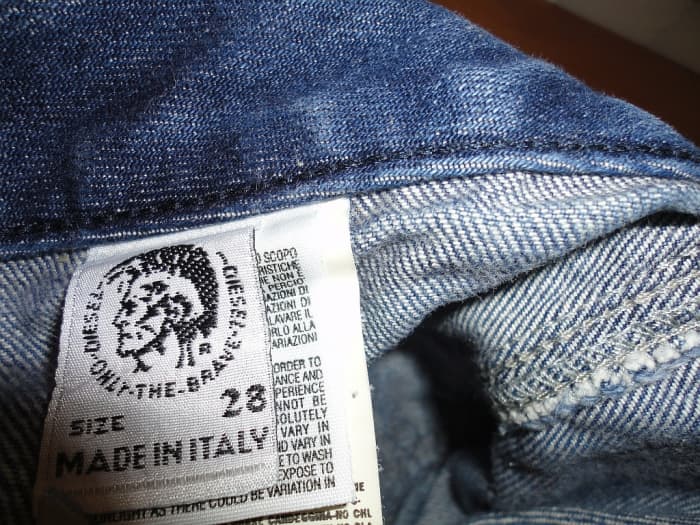
Women's Designer Brand Jeans Are a Common Target For Counterfeiters.
Photo Copyright: Thebestbritish All Rights Reserved
The Skinny on Fake Jeans
Women's designer brand jeans are a hot target for clothing counterfeiters. This guide will help to spot the fakes, find a bargain, and step out in style. We'll be looking specifically at jeans from some premium labels and showing you the correct way to identify if the jeans are real. A common problem women find is that they don't know what a real designer jean looks like. This pictorial guide has actual photographs from genuine jeans, so you have an accurate base to start from.
How to Tell If Designer Labels Are Fake
Common ways of spotting fakes are:
- Missing or wrong printing on labels
- No security devices, like micro-stitching
- Incorrectly stamped riveting
- Poor-quality stitching
- Poor-quality material
- Incorrect inseam length
Fake designer brand jeans are spotted by examining where the counterfeiters have failed to reproduce coloring, style or security devices. It's not enough to find one problem, but rather finding numerous flaws in the clothing which 'adds up' to help you authenticate the jeans.
The Basics
Premium brand labels spend resources in delivering a product which is set to a standard in manufacturing quality. This Quality Control or Quality Assurance [QC/QA] ensures every pair of jeans they produce is identical within a particular product line. This commonality means there are 'clues' within the jeans themselves that point to them being genuine.
Counterfeit jeans are made as cheaply as possible using poor quality materials. With limited budgets to spend on reproducing the internal look and feel of the jeans, the fakers try to mimic the outside of the style of the garments, without worrying about copying what would be inside genuine jeans.
What this means, is fake jeans will have:
- Generic riveting stamped inside
- There won't be as many cloth tags within the jeans
- Zippers and zipper tags will be generic and unstamped
- Inside seams will be shorter to save on textile costs
- Branding patch on the back of jeans made from cheap cardboard
![Looking at a genuine tag, one will see the style code [P348 ...] & cut # [714477] have been screen printed directly onto the tag. A fake pair of jeans would be stitched on, not printed.](https://images.saymedia-content.com/.image/c_limit%2Ccs_srgb%2Cfl_progressive%2Cq_auto:eco%2Cw_700/MTc0NTAxMTc3MDY3ODQxNDgx/how-to-spot-fake-designer-clothes.jpg)
Looking at a genuine tag, one will see the style code [P348 ...] & cut # [714477] have been screen printed directly onto the tag. A fake pair of jeans would be stitched on, not printed.
Photo Copyright: Thebestbritish
Internals of Brand Jeans
While every manufacturer will have different ways of producing their garments, they generally follow a common structure. Inside labels and panels for the style and size of the jeans will be made with small, close stitched threading. It takes longer to stitch threads close together. This is a sign of quality.
A fake label would have longer stitched threads and longer spacing between them, meaning the garment could be copied faster. The stitching on a genuine pair of jeans will have uniform construction. All inside and outside stitching will be very neat.
Manufacturers may have at least 1 or 2 inside labels denoting style number, or style code. Many labels do not stitch these numbers into the tag. Rather, they are printed onto the tags using screen printing.
This screen printing process takes longer and expends resources the counterfeiters do not have. So fake jeans may have numbers and style codes stitched into the tag. By examining the back portion of a tag, a screen printed style code won't have any stitches directly behind it. It would be plain, with no stitching showing through.

Inside tag shows clearly the screen printed style code & cut #. Also note the stamped emblem rivet
Photo Copyright: Thebestbritish

Genuine brand label showing detailed stitching & font on the inside tag
Photo Copyright: Thebestbritish
Another sign to having genuine jeans, is the use of propriety fonts by the manufacturer. In the photographs above, one will note the number 2 is shaped almost like a swan. The font is rounded and well-made, with attention to detail paid within the tiny stitching. The second photograph shows the number 3. Again, look how the manufacturer has paid great attention to curve the number.
Counterfeit jeans would not have this attention to detail and could be stitched with straight, rigid lines. The numbers may be thinner and not well rounded or curved as in the examples.
Read More From Bellatory
Security Devices
Micro-stitching is a security device and anti-counterfeiting measure used on designer garments. This manufacturing process uses high precision machinery to stitch tiny, near-microscopic threads featuring numbers or letters into tags or labels on the inside of garments.
Many brand label manufacturers use micro-stitching on the label tags as a security feature, such as:
- Diesel Jeans
- Citizens of Humanity
- Seven For All Mankind
Due to the high costs and technical expertise needed to employ such a security device, counterfeiters would not have the ability to reproduce or copy such methods.
The micro-stitching is generally placed on top of a metal foil strip, and can be found near bottom of a tag label. One may need a magnifying glass to closely inspect the micro-stitching.
The following two photographs show a close up of micro-stitching on foil material found at the foot of a label tag. The lettering printed within them is tiny and almost invisible to the naked eye. Jeans featuring this device would almost certainly point to them being genuine.

Diesel jeans employ a Micro Stitching security device showing lettering on label tag
Photo Copyright: Thebestbritish

Close up detail of Micro Stitching on authentic Citizens of Humanity brand jeans
Photo Copyright: Thebestbritish
Genuine Zipper Sliders


Not all manufacturers use micro-stitching on their labels. So another clue to authenticating genuine brand label jeans would be to look closely at the zipper hardware and rivets.
Zipper Hardware and Riveting
Rivets on real jeans would almost certainly carry the logo or name of manufacturer on them. In most cases, there will be the symbol, or mark on the inside rivets.
Another key clue to the authenticity of jeans would be on the zipper pull tab and slider. The mark of the manufacturer, or their logo, could be on the zipper. Fake jeans would not have this and would be an unstamped blank zipper tab.
A famous and genuine example of this would be YKK Fastening. The zipper tab would have either YKK stamped on front, but also on rear of the slider, which fastens the zip. To the right are examples of genuine zipper tabs and sliders. Notice how the brand manufacturer is clearly shown on the zipper pull tab.
Using this information, one would certainly expect a genuine label brand of jean to have either YKK zipper or their own mark or symbol on the tab. If the tab slider is blank on front, then look on the back of the slider. YKK would be stamped there, too.
Coloring, Materials and Textiles
Brand label jeans are made with superior quality textiles. The weight of the fabric would feel heavier since it is of a thicker yarn. Fake jeans are often made of much cheaper and thinner material. The coloring could appear strange, or have dye runs and discolorations on the denim material.
Some manufacturers of designer label jeans have common cut lengths to the jeans. This manifests itself as having an inseam length of around 34.5 Inches. This is so the jeans can be tailored to suit the owner perfectly.
Another commonality may be the width of the outer end of the jeans, most commonly referred to as the 'cuff'. For many manufacturers, this would be an exact width and would be the same amongst a range of a particular style.
Inseam Length
If buying a pair of gently worn used jeans on eBay for example, then the inseam length may have been altered to fit the previous owner.
New jeans, however, would have a common cut length. Most sellers of genuine label jeans would include this information on the listing. Fake jeans, as being made as cheaply as possible, would not have the additional length on the inseam, as this would increase their costs in additional materials. It's a minor clue as to authenticity, but not all manufacturers have extended lengths.
Important Takeaways
Let's review this guide to authenticating jeans. The more features one finds inside the waist area will lead to a conclusion that the jeans are genuine:
- Are there at least 1, or additional, labels and tags inside the waist area showing size and style codes. The more tags there are inside, point to authenticity.
- The style code or cut numbers are generally printed onto the tag, rather than stitched into the tag.
- Do the labels feature metal foil security devices with tiny micro-stitched lettering. Having such a security feature, points to authenticity.
- Is the zipper pull tab stamped with either YKK, a manufacturer logo, or lettering. If no symbol or lettering appear on front zipper, this could indicate counterfeit jeans.
- Are all inside stitches true and of high quality. There should be no under-runs, over-stitching, or errors.
- Does the denim feel heavyweight; alternatively, do they have a superior soft feeling to the touch.
Checking the jeans for a few of these 'clues' should indicate that the jeans are real and not counterfeit. It takes merely seconds to quickly verify such features and tags are present on the jeans. Happy shopping.
This content is accurate and true to the best of the author’s knowledge and is not meant to substitute for formal and individualized advice from a qualified professional.
Questions & Answers
Question: What about Miss Me jeans? They have multiple lines and as such tags and markers change. Some of my Jeans have the YKK zipper; an M printed; a MMiss Me tag or a Miss Me tag. Some have rivets on the back leather patch label while others do not. How do you tell when there are so many differences between Jean types from the same brand?
Answer: The more features one finds in the jeans could give clues to their authenticity. YKK or self branded zippers would appear genuine. If there are multiple tags then this is a good sign. Miss Me jeans in particular have a belt loop at the back which should be positioned directly above the rear gusset seam. There should be a stitched stylized M logo on the coin pocket and all riveting on the jeans should show a logo or pattern on the rivet. The rivets should not be plain.
Question: what information appears on the label of denim jean?
Answer: This article contains many indications of what information may be on the denim jean labels of authentic designer jeans.
Micro stitching on the labels; a particular font used on a certain brands label; serial numbers printed onto labels, rather than stitched; the number of labels attached (The more labels is a good clue of authenticity); Inside labels will have small close stitched threading.
All of these features, & more, may be indicative of having a genuine pair of designer jeans.
There are so many brands of denim jean that it would be difficult to tell which particular security or design feature is on them all. This article gives a starting point with many features which are present in some different manufacturers.
Read through the complete article, it will give indications & clues of what information would be on a genuine pair of designer label denim jeans, not just the labels.
Question: Do Joe's Jeans have two small white fabric tags each with a red line on them? Is this a validation for the brand, or a way of preventing a fraudulent return to Joe's boutique? I purchased jeans from TJ Maxx, but don't want to wear them and feel embarrassed if they're authentic but disfigured by TJ Maxx for distinction purposes. Please advise. All the other markings and requirements for authenticity are there.
Answer: Unusual markings on inside tags may be a way for a particular brand to mark the item as having a small defect, or failing other Quality & Assurance [Q&A] checks - most brand labels use Q&A to ensure consistency of the product. This prevents fraudulent returns of items to the main boutique stores.
The manufacturers employ various means to mark the inside of items to show that they are, "factory seconds." Such marks could include: Permanent red marker pen stripes; X marks; lettering inside labels; printed symbols. Levis Jeans use a joker symbol from a deck of cards printed onto the inside label of their jeans to mark them as factory seconds. Other manufacturers have the back outside label ripped or removed.
The main aim of these markings is to prevent factory seconds - and other items that have failed Q&A - from being sold as perfect items to the public. Factory seconds can be bought wholesale and resold to retailers specialising in those products at a discount to the regular pricing.
Stores such as Winners (Canada), TJ Maxx (USA), TK Maxx (United Kingdom & Europe), and many smaller online wholesale marketers deal in these types of products sold directly to the public.
© 2014 Hilary







